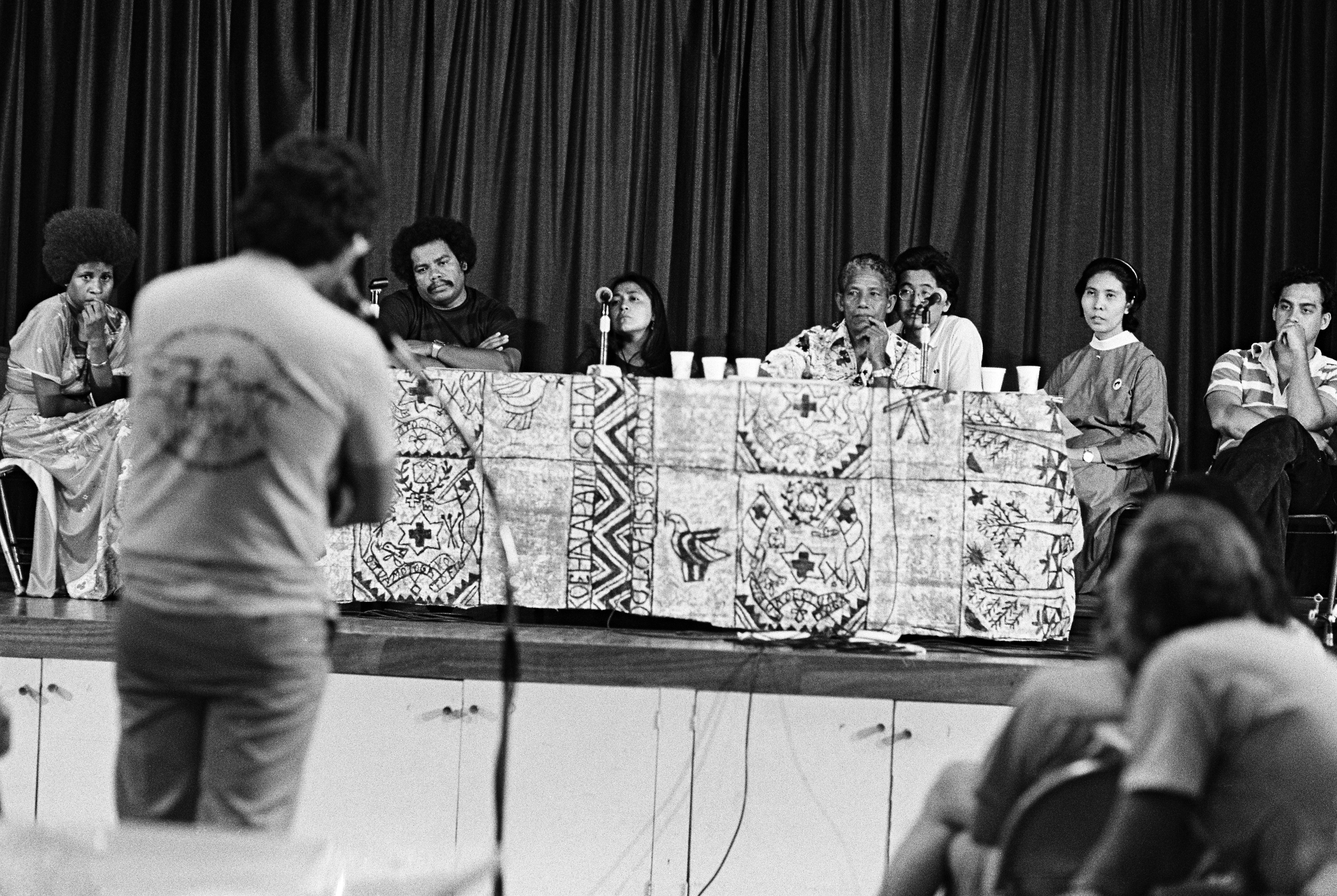Pacific Network on Globalisation, “Hilda Lini - Drawing the Pacific Blue Line," Facebook, December 2, 2022, ➝.
“Wansolwara” is a Tok Pisin term meaning “One Salt Water” or “One Ocean, One People.”
Vijay Naidu, “The Fiji Anti-Nuclear Movement: Problems and Prospects,” in The Pacific: Peace, Security & The Nuclear Issue, ed. Rangini Walker and William Sutherland (London: Zed Books, 1988).
Nic Maclellan, “The Nuclear Age in the Pacific Islands,” The Contemporary Pacific 17, no. 2 (2005): 363-372.
Microform, 1963-2000, Young Womens’ Christian Association of Fiji/Amelia Rokotuivuna Archives, Australian National University, Pacific Manuscripts Bureau; Vanessa Griffen and Claire Slatter, Povai, (March/April 1976).
Giff Johnson, “Marshall Islands calls off talks after no US response on nuclear legacy plan,” RNZ, September 24, 2022, ➝.
Léna Normand, “This is what nuclear weapons are—a conversation with survivors of nuclear weapons,” (presented at the ICAN Nuclear Ban Forum, Aula der Wissenschaften, Vienna, June 18-19, 2022), ➝; Hinamoeura Cross and Anaïs Doung-Pedica, “‘The greatness of France, I carry it in my flesh and blood’: Hinamoeura Cross on anti-nuclear and pro-independence activism in Mā’ohi Nui,” The New Outrigger, October 31, 2022, ➝.
Vanessa Griffen, “Nuclear-Free Pacific Nearer,” Pacific Islands Monthly 46, no. 9 (September 1975): 28.
Griffen and Slatter, Povai.
Hilda Lini, “Toktok bilong Edita,” Nasiko (February 1980): 5.
Talei Luscia Mangioni, “Art-Story of the Niuklia Fri Pasifik: On Doing Creative Histories,” Journal of Pacific History (forthcoming).
Joy Lehuanani Enomoto and D. Kealiʻi MacKenzie, “Saltwater Archives: Native Knowledge in a Time of Rising Tides,” in Routledge Handbook of Postcolonial Politics, ed. Olivia U. Rutazibwa and Robbie Shilliam (London: Routledge, 2018).
